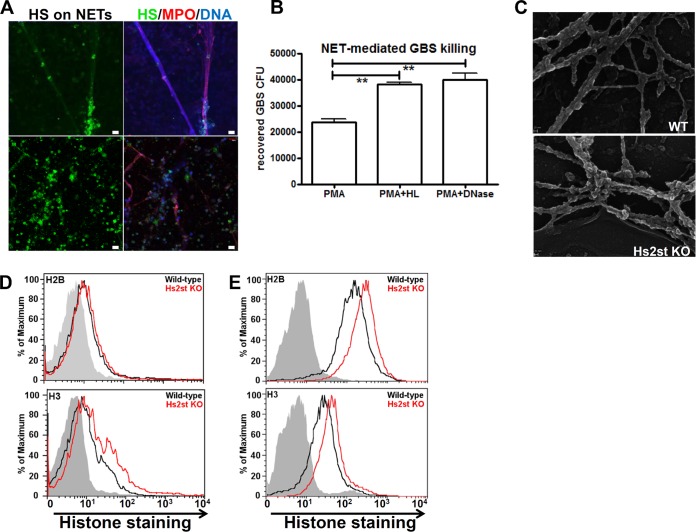FIG 5.
Reduced extracellular-trap (NET) formation in Hs2st-deficient neutrophils. (A) Human neutrophils were treated with 25 nM PMA for 3 h to allow NET formation, treated with heparan lyase III (5 mU/ml), fixed, and stained with mouse anti-stub heparan sulfate MAb, rabbit anti-myeloperoxidase PAb, and DAPI, followed by appropriate fluorochrome-conjugated secondary antibodies. (B) Human neutrophils were treated with 25 nM PMA for 3 h to induce NET formation and then treated with DNase I (10 U/ml) or heparan lyase I and III (5 mU/ml) for 30 min at 37°C, followed by incubation with GBS for 30 min. Surviving GBS were enumerated by serial plating. Differences between groups were calculated by unpaired t test. **, P < 0.01; *, P < 0.05. (C) Scanning electron microscopy image of NETs produced by the PMA-activated neutrophils collected from WT or Hs2st-deficient mice. (D) Binding of histone H2B and H3 (both at 5 μg/ml) to peripheral neutrophils isolated from WT and Hs2st-deficient mice. (E) Binding of histone H2B and H3 (both at 5 μg/ml) to endothelial cells isolated from WT and Hs2st-deficient mice.

